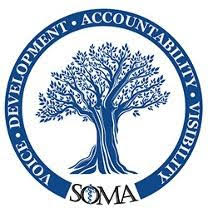› Forums › Spring 2021 Resolution Forum › Resolution: S-21-06: IMPLEMENTATION OF ACCESSIBLE MEDIA AND PROGRAMMING STANDARDS WITHIN THE STUDENT OSTEOPATHIC MEDICAL ASSOCIATION (SOMA)
- This topic is empty.
-
AuthorPosts
-
-
February 18, 2021 at 11:04 am #3513
Valerie Lile
KeymasterWHEREAS, previous approved SOMA resolutions support the standardization of nondiscrimination in osteopathic medical schools, including disability discrimination, and
WHEREAS, currently there is no standard for media presented by SOMA to include captions, alternative text, color formatting suitable for colorblind individuals, amongst other accessibility standards, and
WHEREAS, current media presented from SOMA lacks accessibility, and
WHEREAS, the authors define media as education, programming, and announcements posted on social media outlets, and
WHEREAS, the authors define accessibility as the degree to which media or an environment is available to as many people as possible1, and
WHEREAS, the student community recognizes the needs of those who may be unable to hear and/or see media presentations, and
WHEREAS, 90.4% of students with various disabilities recognize captioning as at least moderately helpful with 65.5% of students with various disabilities recognizing it as very helpful. Additionally, 87.7% of students who identify with no disabilities recognize captioning as at least moderately helpful with 57.2% of students who identify with no disabilities recognizing it as very helpful2, and
WHEREAS, tools to enhance accessibility, not limited to auto-captioning and color shading, are available, and
WHEREAS, current SOMA in-person programming announcements often do not include whether an event location is accessible or have the standard that the location is always accessible, and
WHEREAS, alternative text descriptions can be included with charts, graphs, images and maps for discernment; now, therefore, be it
RESOLVED, that SOMA will format media that is inclusive to the needs of those who do not see and/or hear, have color-specific formatting needs, and who need physical disability accessibility services; and, be it further
RESOLVED, that SOMA accomplish accessible media by the use of alternative text, video captioning, appropriate color contrast, and directions with accessible routes to in-person events on media3; and, be it further
RESOLVED, that SOMA require all in-person events to be held at ADA compliant facilities; and be it further
RESOLVED, that National SOMA will encourage and aid local chapters in adopting this standard.
Explanatory Statement
As rising physicians, SOMA has the responsibility to set an example of increasing accessibility. Disability spans every demographic category and is the only minority category that people may transition into or out of throughout their life. Since the passage of the Americans with Disabilities Act over 30 years ago, the US has made changes to make our country more accessible, but we still have work to do. Medical professionals are expected to advance their practices to serve the community. Setting forth a thoughtful example of media and programming standards is in line with the expectations of the profession. The last reference article includes examples of how individuals may learn to make environments more accessible.5
Relevant Existing Policies:
SOMA Policy:
S-15-07
References
- “Accessibility Defined: My Blind Spot.” My Blind Spot | My Blind Spot – Inspiring Accessibility For All, 23 Apr. 2020, myblindspot.org/mbs-accessibility-defined/#:~:text=Accessibility%20can%20be%20viewed%20as,the%20use%20of%20assistive%20technology
- Stritto, Mary Ellen Dello, and Katie Linder. “A Rising Tide: How Closed Captions Can Benefit All Students.” EDUCAUSE Review, 28 Aug. 2017, er.educause.edu/articles/2017/8/a-rising-tide-how-closed-captions-can-benefit-all-students#:~:text=Use%20of%20Closed%20Captions&text=Among%20all%20respondents%2C%2035%20percent,least%20some%20of%20the%20time.
- Gavin, Kara. “More Medical Students Are Disclosing Their Disabilities, and Schools Are Responding, Study Finds.” University of Michigan, 27 Nov. 2019, labblog.uofmhealth.org/med-u/more-medical-students-are-disclosing-their-disabilities-and-schools-are-responding-study.
- “How To Include People with Disabilities.” Respect Ability, 2 Mar. 2020, http://www.respectability.org/inclusive-philanthropy/how-to-include-people-with-disabilities/.
______________________________________________________________________________
Submitted by:
Alana Castro-Gilliard, OMS III- Edward Via College of Osteopathic Medicine-Virginia Campus
Miranda Guerriero, OMS III- Lake Erie College of Osteopathic Medicine- Seton Hill Campus
Action Taken:
Date:
Effective Time Period: Ongoing
-
-
AuthorPosts
- The forum ‘Spring 2021 Resolution Forum’ is closed to new topics and replies.
